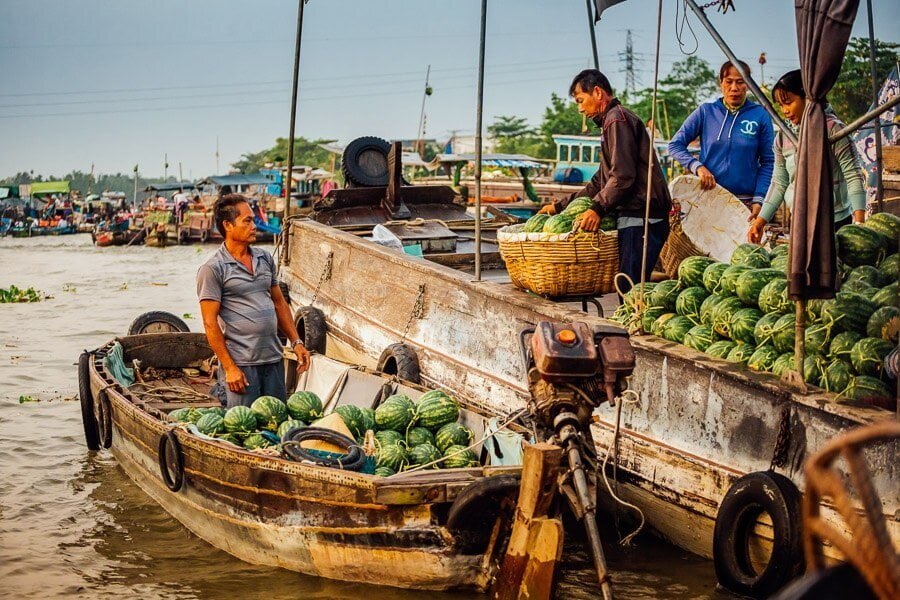The Role of the Cham and Malay Colonies in Vietnam (18th-19th centuries)
by Nicolas Weber
Power struggle and ethnic minorities in pre-colonial Southeast Asia, and in particular across the Mekong Delta.

- Publication
- Journal of the Economic and Social History of the Orient 54, pp 739-772 | Brill
- Published
- 2011
- Author
- Nicolas Weber
- Pages
- 34
- Language
- English
pdf 929.1 KB
Ethnic settlements around pre-colonial Southeast Asia were seldom part of political design. The author, a Cham civilization specialist, focuses on the instrumentation of Cham and Malay communities by Vietnamese rulers for territorial expansion and marginalization of the Cambodian areas of influence along the southern coast.
- A long tradition: “The use of foreigners for the development and defence of newly conqueredlands in southern Vietnam began in the seventeenth century, when the Nguyêñ Lords (1558−1776) expanded their domain by incorporating the territories of the kingdoms of Champa1 and Cambodia. Vietnamese historical records describe in detail how non-Viêṭ peoples were encouraged tofound military plantations (đôǹ điêǹ 屯田) or military colonies in theMekong Delta (which were part of the kingdom of Cambodia at that time) at the end of the seventeenth century. Vietnamese historical documents record, for instance, the appointment in 1679 of Chinese political refugees Dương Ngaṇ Đic̣ h (in Chinese, Yang Yuandi), Hoàng Tiêń (Huang Jin), Trần Thượng Xuyên (Chen Shangchuan), and Trần An Bình (Chen Anping) as heads of military colonies.”
- Chams in Cambodia: “The Chams have a long history in Cambodia. The first testimonies of the Cham migrations from Champa to Cambodia date to the tenth century. Historical records make clear that the migrations have often been linked to politics and were caused by the conflicts between Champa and the Viêṭ kingdom.”
- Power struggle and French colonization: “The Cham and Malay communities of southern Vietnam differ from other migrant communities, in that their members were called upon to play both a military and a political role. Just like ethnic Viêṭ settlers, Chams and Malays have been part of a trend of migration that transformed southern Vietnam. By establishing the Chams and Malays in Tây Ninh and Châu Ðốc, the Vietnamese pushed their frontier further into Cambodian territory and extended their influence. Cham and Malay identities had to disappear as identifiable groups within an ideal, culturally homogenous empire. The imperial government managed the Chams and the Malays carefully, with clearly established goals. By dispersing Chams and Malays into ethnic-Viêṭ-populated villages, Vietnamese central authorities hoped they would become acculturated to the Viêṭ, but the true extent of the Vietnamese imperial court’s plan could never be realized because of the French conquests in Indochina. (…) Once the south fell into French hands, Vietnamese military colonies were made redundant, thus causing Chams and Malays to lose their military role.”
Full title: Securing and Developing the Southwestern Region: The Role of the Cham and Malay Colonies in Vietnam (18th-19th centuries).
Photo: Modern days Can Tho, town in the Mekong River Delta (by www.wander-lush.org)
Tags: Chams, Malay, military, Mekong Delta, Dai Viet, Vietnam, Cambodia, Kampuchea Krom
About the Author

Nicolas Weber
Nicolas Weber is a researcher in Southeast Asian studies, specializing in Cham ancient and modern history.
With a PhD in Asia-Pacific Studies from Institut national des Langues et Civilisations orientales (INALCO, France), he was a visiting lecturer at the Department of Southeast Asian Studies, Faculty of Arts and Social Sciences, University of Malaya, Kuala Lumpur, Malaysia, and is currently teaching at the Department of History, Sun Yat Sen University, China.

